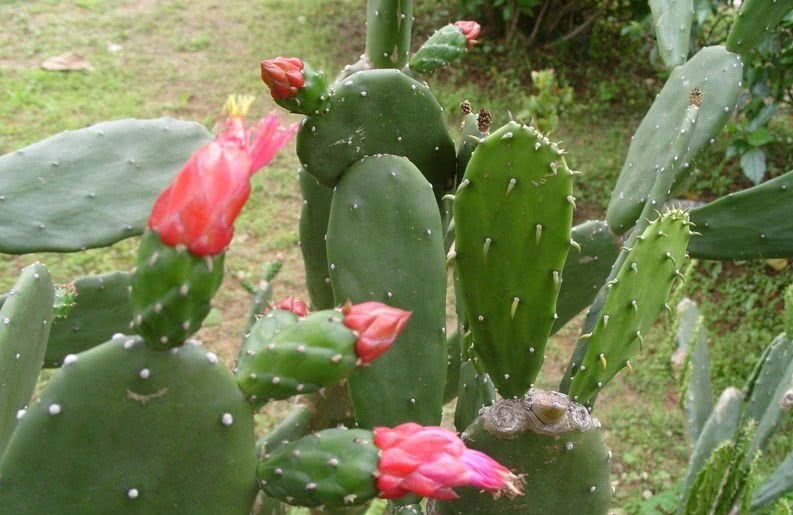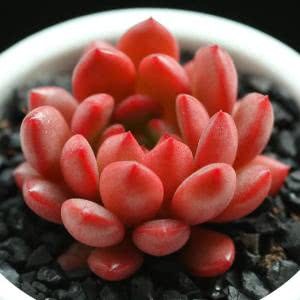I don't know what kind of plants to grow in the bedroom? Raise these plants and try to purify the air and beautify the room.

Whether and what kind of plants can be raised in the bedroom has always been controversial. Some flower lovers believe that plants, like people, absorb oxygen and release carbon dioxide at night, which will compete with people for indoor oxygen and produce more carbon dioxide. In fact, some plants in nature are different from other plants. They can absorb carbon dioxide to purify the air at night and create different natural oxygen for our rooms. Come and see what plants there are.
1. Tiger Pilan. Tiger Pilan is a kind of foliage-based plant, which rarely blossoms. Tiger Pilan not only has high ornamental value, but also is an expert in air purification. In the process of growth, the stomata of its leaves are closed during the day and open at night, releasing oxygen for human absorption.
Tiger Pilan likes to dry and avoid dampness, and the soil configuration is generally recommended to be sandy loam with good drainage. Very resistant to drought and barren, but not long-term drought, otherwise the leaves will become thinner, thinner, and lose luster. Summer aquaculture if strong light exposure will also cause leaves to darken, whiten, watering too often not only easily lead to rotten roots, but also make leaf markings lighter or disappear.
two。 The turtle carries the bamboo. The leaf shape is strange, the hole is cracked, very much like the back of the tortoise. Tortoise back bamboo leaves are green all the year round, with stout stems, strong aerial roots and extremely shade tolerance, so it is a famous indoor potted foliage plant. Tortoise back bamboo has the effect of absorbing carbon dioxide at night, which is of great help to improve the air quality of the room and increase the oxygen content. It also has the advantage of giving priority to adsorbing harmful gases such as formaldehyde and benzene, so it is very suitable for indoor breeding, especially in bedrooms.
The original living environment of tortoise back bamboo is under the big trees in the tropical rain forest, like dampness and endure shade, afraid of bright light and dry air environment. The leaves of Phyllostachys pubescens are dark green and like slightly acidic soil. Family culture can irrigate the plants with ferrous sulfate solution of 1VRU 2000 once a month to prevent iron deficiency yellowing of leaves.
3. Ivy. When it comes to plants that can purify the air, we have to mention ivy. Ivy has a strong rock climbing, long vines hanging down, not only can increase oxygen, reduce dust, but also has the characteristics of preferential adsorption of formaldehyde, benzene and other harmful gases to achieve the effect of purifying indoor air. In southern cities, ivy is often planted in the green belt as a garden cultivation, which shows that it plays an extraordinary role in purifying the air and beautifying the environment.
Ivy is more hardy, general family rooms can be safe through the winter. Like a warm and humid environment, lack of water or excessive drought will cause fallen leaves. When the air is dry, you can often spray water on the leaves to moisturize.
4. Aloe. Aloe is a kind of green plant loved by many flower friends, especially women who love beauty. Aloe has a good adsorption capacity for harmful gases such as carbon dioxide and formaldehyde in the air, and can also remove harmful microorganisms in the air, which can play an important role in improving the quality of the room. A few varieties of aloe, such as Aloe vera, Aloe barbadensis and Aloe arborescens, have both cosmetic effects.
Aloe likes light and shade, and avoids direct sunlight and excessive shade. Has a strong drought tolerance, afraid of stagnant water. Aloe likes the culture environment with good ventilation, and the most suitable growth temperature is 20 ℃ ~ 30 ℃. If the temperature is lower than 0 ℃, it will suffer frost injury.
5. Longevity flowers. The longevity flower plant is small, the petals are dense and clustered together when blooming, and the florescence can be as long as half a year, so it is deeply loved by flower friends. Longevity flowers belong to crassulaceae. A common feature of this plant is that it closes its stomata during the day, opens it at night to absorb carbon dioxide and toxic gases from the air, and releases oxygen for human absorption.
Longevity flowers like warm, drought-resistant, sunny environment and blossom in winter and spring. Summer longevity flowers will go into dormancy or semi-dormancy due to temperature discomfort. It is necessary to move longevity flowers to a cool and ventilated place in time and give them appropriate cooling. The longevity flower is not resistant to cold, and the growth room temperature is 15 ℃ ~ 25 ℃. Longevity flowers belong to short-day flowering plants. In the early bud stage of autumn and winter, 8 hours of light a day, combined with spraying potassium dihydrogen phosphate solution, can bud and blossom in 3-4 weeks.
- Prev

What if the cactus at home is thick or not? The florist gives you some good advice.
Why is the cactus not thick? In fact, there are many reasons for this, first of all, the cactus planted in the ground is thicker than the potted cactus, the root system of the cactus is wider, the extension area is larger, the root system is more developed, and the ground.
- Next

It is the best succulent plant to raise, and the fallen leaves can sprout and grow beautiful.
Succulent plant is one of the potted flowers that many flower friends like, it is very easy to raise, and the ornamental value is very high, so it is a good choice to decorate the room. Today, the editor will continue to recommend a kind of succulent plant that is very easy to raise in summer.
Related
- Wuhan Hospital Iron Tree Blooming Result Was Instantly Frightened by the Gardener Master
- Which variety of camellia is the most fragrant and best? Which one do you like best?
- What is the small blue coat, the breeding methods and matters needing attention of the succulent plant
- Dormancy time and maintenance management of succulent plants during dormancy
- Minas succulent how to raise, Minas succulent plant pictures
- What are the varieties of winter succulent plants
- How to raise succulent plants in twelve rolls? let's take a look at some experience of breeding twelve rolls.
- Attention should be paid to water control for succulent plants during dormant period (winter and summer)
- Watering experience of twelve rolls of succulent plants
- Techniques for fertilizing succulent plants. An article will let you know how to fertilize succulent plants.

